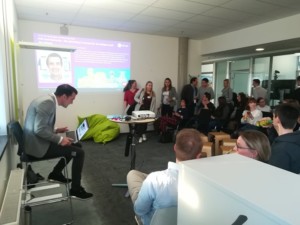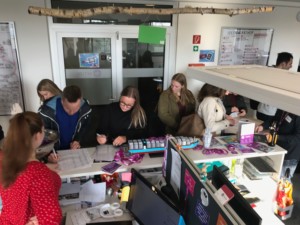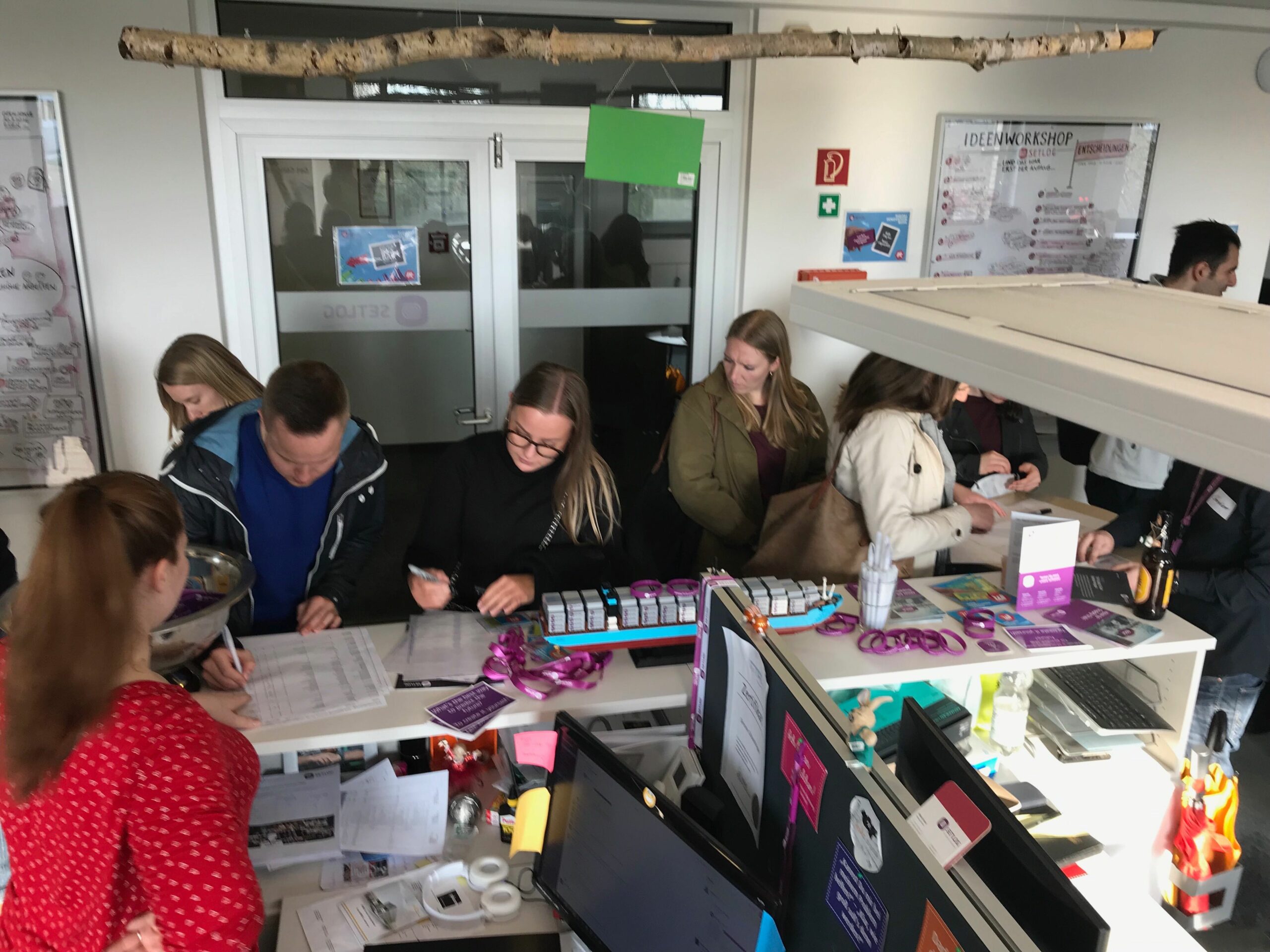Once upon a time there was a question… How do I raise a lead properly?

Leeeeeeeeeeaaaaads…The goal of every entrepreneur! The longer you pull the syllables, the more meaningful it becomes. And why? Quite simple! Because leads are simply important.
With leads it works like with a pet. You can’t just buy one and then do nothing to see what happens. Leads must be maintained and entertained. Before the leads end up in the marketing/sales animal shelter: Who you gonna call? Alexander Fink! (link to content moves), who gave us his tips about Lead Nurturing on April 09th.
We do it with fun but not for fun
The fact that Lead Nurturing, i.e. the “nursing” of leads, involves a highly educational responsibility and is not “just made that way”, was emphasized by Alexander during his talk.
Even if Alexander and his team enjoy doing what they do, one should not misjudge the seriousness of the matter or at least the work behind it.
But let’s start from the beginning: What is a lead, which someone should treat in a warm, lovely and considerate way?
A Lead is a Lead, is a Lead, is a Lead
Even if a company has a first and last name at its disposal, it has already a lead. By definition, a lead in online marketing refers to a new contact that has been acquired through an online marketing measure. Such a measure can be email marketing or downloading a white paper or something similar.
This is one of the first steps to get a lead. But now the work begins to keep it and turn it into a real customer.
Metamorphosis
At this point, it should be the goal of every company or every marketing and sales department to transform and further develop the lead, i.e. let it grow.
With this we have arrived at the adolescent phase of such a lead: now it must be handled carefully and cautiously, beware not to frighten or annoy it. We must give the lead some freedom. Attention plays a very important role here:
After all, according to Alexander Fink, 90% of leads (not customers!) are not processed any further by the sales department. They tried to contact him again after downloading a whitepaper, but he didn’t answer the phone and whoosh – the lead disappears in the graves of customer acquisition. The effect: Like an iceberg, you only look at the visible customers and neglect those who have disappeared into the graves. What sounds simpler and more inconvenient, however, also means that you lose many potential customers.

What to do?
The first thing you can do is to lock marketing and sales together in one room to see what happens. Alexander Fink guarantees that only good things can come out. What many don’t know is that especially in Lead Nurturing the interaction of marketing and sales is essential; only in 8 out of 10 cases marketing and sales go hand in hand and jump together across the meadow.
Not only the cooperation plays a role, but also the right timing. This is important in order to turn a MQL (Marketing Qualified Lead) into a SQL (Sales Qualified Lead). While MQLs are part of the first step to be activated by content, support and information through marketing, it is necessary to pass these leads on to sales. Why does the right time play such an important role here?
Let’s put ourselves in the position of a potential customer, after all, everyone was one at some point. A lead is like a shy deer or a pubescent teenager: Once you’ve won its trust, you don’t want to scare it off with liabilities or even chase it away; sensitivity is required here. Before the lead can become a customer, a basis of trust must first be created; in this phase, the MQL must first qualify for the status of an SQL. And this requires appropriate communication and agreement between marketing and sales; here the ball must be played at exactly the right time to win a customer who has confidence in the company and in the product and does not feel cheated or even ignored – the lead should finally buy the product and WANT to sign the contract at the end.
Getting the ball rolling
While the ball is rolling, uh, the lead is qualified, trust can be gained with appropriate content, such as a newsletter. The rule is: the more personalized, the better. A company can make use of numerous tools, such as Hubspot (link to Hubspot), with which emails can be sent automatically and personally.
As with many past Meetup topics, this also applies here:
TESTING,
TESTING,
TESTING.
Trying things out can be illuminating in almost all areas of life, in Lead Nurturing it represents an important process. Depending on the type of product and the target group, it is important to be close to the customer. A concrete planning is not always advantageous, it can even hinder the process; sometimes you have to “just do it”. But here, too, time plays its part, because good things take time: For the “test phase” you need, as with many other things, a certain amount of patience; so it can take half a year or even a whole year until you turn your leads into contacts and have discovered the right tactics for yourself.
FOCUS!
Besides testing, testing, testing, this also means focus, focus, focus. The threefold focus is not a move by Chuck Norris, but three important steps to focus on in Lead Nurturing:
Focus 1: Lead acquisition and nurturing
Focus 2: Desired customer and industry
Focus 3: Persona, Phase Content
With the flood of information Alexander was able to bring us closer to the target group on this evening. The level of knowledge was relatively diverse, but as always, everyone was able to take home new impressions and information. A few tips from the subsequent discussion round are also available here:
Tips
Tools such as Hubspot can be expensive, but there are Basic tariffs, with which you can test first, which services you really need, before you reach for a Premium tariff.
Meetups are very helpful for companies and the respective departments to exchange ideas and thus grow; workshops also help to expand and consolidate competencies.
Questions, questions, questions, also for help: At events like Meetups, experts and interested parties come together, you have the chance to ask them for tips, but also to get fresh looks from outside and from “non-experts”.
